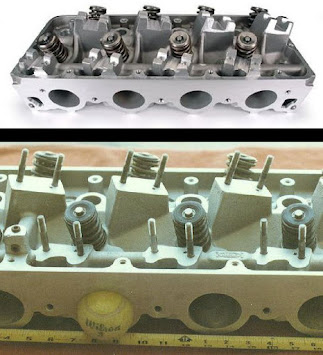Homonym (pronounced hom-uh-nim)
(1) In phonetics, a word pronounced the same as another
but differing in meaning, whether spelled the same way or not, as heir and air;
a homophone.
(2) In phonetics, a word of the same written form as
another but of different meaning and usually origin, whether pronounced the
same way or not; a homograph.
(3) In phonetics, a word that is both a homophone and a
homograph, that is, exactly the same as another in sound and spelling but
different in meaning.
(4) A namesake (a person with the same name as another)
(obsolete).
(5) In taxonomy, a name given to a species or genus (that
should be unique) that has already been assigned to a different species or
genus and that is thus rejected.
1635–1645: The construct was homo- + -onym. From the French homonyme
and directly from the Latin homōnymum,
from the Greek homṓnymon, neuter of homṓnymos (homonymous) (of the
same name). Homo was from the Ancient
Greek ὁμός (homós) (same). The –onym suffix was a creation for the international
scientific vocabulary, a combining from the New Latin, from the Ancient Greek ὄνυμα (ónuma),
Doric and Aeolic dialectal form of ὄνομα (ónoma) (name),
from the primitive Indo-European root no-men-
(name); the related form –onymy also
widely used.
For a word which some insist has a narrow definition, it’s
used by many to mean quite different things, the related forms being (1) homograph
which is a word that has the same spelling as another word but has a different
sound and a different meaning (such as bass which can be wither “a low, deep
sound” or “a type of fish”) & (2) homophone which is a word that has the
same sound as another word but is spelled differently and has a different
meaning (such as to, two & too). Homograph
and homophone are uncontested but homonym is used variously either to mean (1)
a word that is spelled like another but has a different sound and meaning (a homograph),
(2) a word that sounds like another but has a different spelling and meaning (a
homophone) or (3) a word that is spelled and pronounced like another but has a
different meaning (a homograph & homophone). According to the purists, a homonym must be
both a homograph and a homophone and prescriptive dictionaries still tend in
this direction but the descriptive volumes (usually while noting the strict
construction), acknowledge that as used in modern English, a homonym can be a
homograph or a homophone. The sage
advice seems to be (1) to stick to the classics and use all three words in
their strict sense, (2) maintain consistency in use and (3) don’t correct the
more permissive (on the Christian basis of “forgive them for they know not what
they do”).
Crooked Hillary Clinton and the crooked spire of the Church of St Mary and All Saints, Chesterfield, Derbyshire, England. Crooked has two meanings and pronunciations but is the one word used in two senses and thus not homonymic. Crooked (pronounced krookt) is the past tense of the verb crook (bend or curve out of shape), from the Old English crōcian (to crook, to bend) which was cognate with Danish kroget (crooked; bent) whereas crooked (pronounced lrook-id) is an adjective meaning "bent or not straight" and may be used literally or figuratively to describe someone untrustworthy or dishonest. Crooked is thus also an example of a hetronym (same spellings with different pronunciations and meanings
Adding to the murkiness, Henry Fowler (1858-1933) noted
in Modern English Usage (1926) that some
confusion has long clouded homonym and synonym, something he blamed on the “loose”
meaning of the latter, explaining that homonyms are “separate words happen to
be identical in form” while synonyms exist as separate words which happen to
mean the same thing”. However, at this
point an etymological layer intrudes, Fowler noting “pole” in the sense of “a
stake or shaft” is a native English word whereas when used to mean “the
terminal point of an axis” the origins lie in the Greek. Rather than one, “pole” is thus two separate
words but being identical in form are thought homonyms. By contrast “cat” the feline and “cat” as a
clipping of the Admiralty’s flogging device “cat o' nine tails” “although
identical in form and meaning different things are not separate words but the
one used in two senses and thus not homonymic.
Lindsay Lohan on the couch, sofa, chesterfield or settee, depending on one’s view.
Layers attach also to synonyms, a word used anyway with
notorious sloppiness, true synonyms (separate words identical in meaning in the
context in which they’re applied) are actually rare compared with pairs or sets
frequently cited, many of which enjoy only a partial equivalence of
meaning. The imprecise use isn’t
necessarily bad and often is essential for poetic or literary reasons but
technically, synonyms should be separate words identical in denotation (what
they reference) and connotation (what they mean); pure synonyms may thus be
interchanged with no effect but such pairs or sets are rare although in
technical fields (IT & various flavors of engineering) they have in recent
decades became more numerous. However,
even when words satisfy Henry Fowler’s standards, nuances drawn from beyond etymology
and phonetics can lend a layer of meaning which detract from the purity of the synonymousness. Sofa & couch for example are often used interchangeably
and regarded by most as synonymous but to a student of the history of
furniture, because couch is from the French noun couche (a piece of furniture with no arms used for lying) from the
verb meaning “to lie down”, it differs from a sofa (a long, upholstered seat
usually with arms and a back). That’s
fine but “sofa” is used by some as a class-identifier, being the “U”
(upper-class) form while couch, settee and such are “non-U”.

















